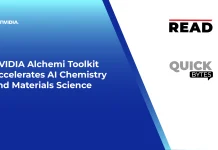Google DeepMind teamed up with Commonwealth Fusion Systems (CFS), a Boston startup that focuses on energy. This collaboration aims to boost nuclear fusion energy development with artificial intelligence (AI). They are making big progress in improving plasma control in fusion reactors. This is a key step for clean, sustainable, and nearly endless energy.
The SPARC Fusion Reactor: A Leap Toward Clean Energy
CFS is revolutionizing energy production with clean, safe, and virtually unlimited fusion power. Their groundbreaking SPARC device, a compact tokamak, harnesses the energy of fusion reactions. High-temperature superconducting magnets within SPARC confine and control plasma at incredibly high temperatures. SPARC is the first magnetic fusion machine made to generate net energy. It will produce more energy than it needs to keep the reaction going. By achieving breakeven, CFS will unlock the door to practical, commercial fusion energy.
CFS is combining SPARC with DeepMind’s AI to solve a tough problem in fusion physics. They want to predict and control plasma behavior in extreme conditions.
AI-Powered Plasma Optimization
The collaboration will use Google DeepMind’s open-source AI software. This includes the TORAX model to simulate and improve plasma dynamics. Plasma is the ionized gas that powers fusion reactions. It’s hard to model because it behaves chaotically. This chaos can quickly destabilize reactors.
Researchers use AI to simulate many configurations and conditions. This helps them find the best ways to keep plasma stable. This method cuts down on trial-and-error work. It may also speed up the path to net fusion energy.
Also Read: BAE Systems Unveils Horizon Solutions, An Expansion in Avionics Services at MRO Europe 2025
AI models do more than control plasma. They can also optimize reactor parts, cut energy losses, and enhance safety protocols. AI in fusion research shows how powerful tools speed up energy innovation.
Impact on the Computer Vision Industry
This partnership mainly focuses on energy. It also affects the computer vision and AI industries.
TORAX AI models leverage powerful algorithms, requiring high-performance computing and advanced visualization capabilities. These advanced techniques work well with computer vision. They allow real-time image processing and help with predictive modeling.
Cross-Industry AI Applications: AI can simulate and predict plasma behavior. AI and computer vision can also help in other complex areas. These include climate modeling, robotics, and industrial automation.
AI-Driven Tools in High Demand: Computer vision companies are booming. AI simulations are key in fast-changing, uncertain environments where quick decisions matter.
Broader Implications for Businesses in the Computer Vision Sector
The partnership between computer vision and AI companies brings unprecedented opportunities and challenges:
Innovation Opportunities: AI-driven fusion research changes how we model and simulate. This sparks new ideas in areas like autonomous vehicles, robotics, and predictive maintenance.
Team Up for Success: Working with energy startups, research groups, or AI companies brings great results. Experts from diverse fields share knowledge, creating new revenue streams.
Experts in high demand drive advanced AI projects forward. Machine learning, computational modeling, and computer vision require immediate attention. Specialized training and workforce development are crucial now.
AI transforms the energy production landscape. Businesses must adhere to ethical guidelines and regulations to ensure transparency and safety
Conclusion
This partnership represents a significant shift, even as commercial fusion energy remains a few years off. It leverages AI to analyze data and foster innovation in complex scientific fields. Researchers are combining DeepMind’s AI with CFS’s SPARC reactor. This speeds up the path to a sustainable energy future.




